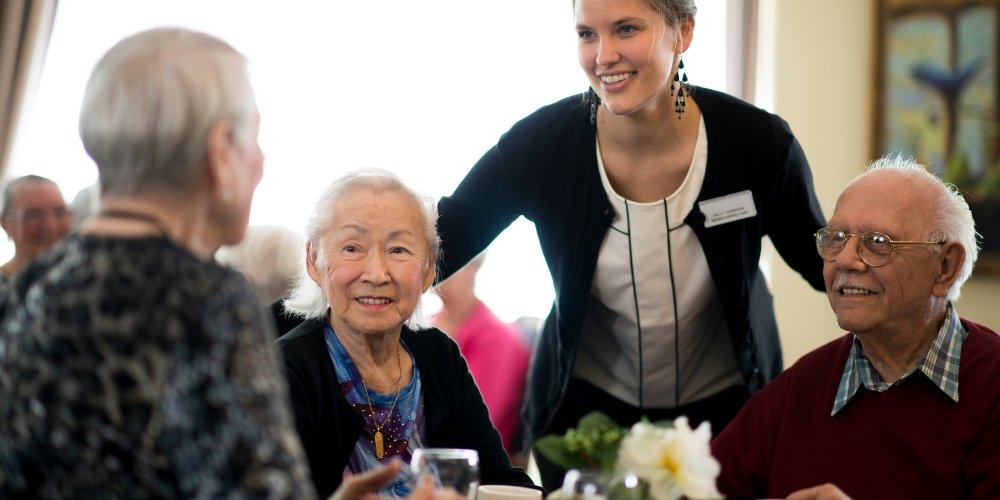When searching for assisted living, there are a lot of factors that come into play. One that many families forget to consider is the difference between a national chain organization and a local, family-owned and -operated assisted living community.
“Seeing a family-run business is usually a great sign that it’s truly all about the people,” says Ivy at Watertown Executive Director Jason Rieger, who has worked in the senior living industry for over 30 years. “If you see it’s privately owned, you’ll notice that it really begins to feel like a family. It’s the best place to live and work.”
There are a lot of reasons why a family-owned and operated community might have a much more personal, homelike, and comfortable feeling compared to a big conglomerate corporation. Here’s a look at the five benefits of family-owned assisted living.
1. The Residents Always Come First
At a family-owned community, it’s usually not just about business. For instance, The Arbors and The Ivy assisted living and memory care communities were started by the Gralia family with the goal of making a difference in people’s lives.
“The Ivy is all about caring about your team and the residents,” Rieger says. “It’s a family-run business, so The Ivy is more resident-centered and employee-centered as far as the focus. It’s not some big conglomerate corporation that can’t help but lose sight of the main reasons people show up to work in the first place, which is to care for these elders.”
“By treating your business as if it’s your own family — because it is — you’ll see that in the quality of care,” he continues. “People are going to be cared for like they’re their own family members.”
2. The Leaders Are Hands-On
Another benefit of moving to a family-owned assisted living community is that the owners are involved in the day-to-day operations of the community and accessible to residents, families, and staff.
“That is one of the special things about this company,” Rieger says. “You have owners who are fully accessible and are living the culture they want to create, which is truly like an extended family. They know all their employees by name. They are working right alongside everyone else, just as hard if not harder. That’s motivating and inspiring to the whole team.”
3. Everyone Has a Name
At a family-owned and -operated senior living community, the team members and care partners are empowered to make decisions and respond attentively to resident and family needs.
“A lot of times, big corporations have so many different layers and they lose touch with those personal connections — with residents and staff,” Rieger says. “The folks who work for this company aren’t number. Everyone has a name and a purpose and they are cared about. And that’s reflected in the care provided.”
4. Happy Staff Mean Happy Residents
Family-owned communities care just as much about the staff — which could be brothers, aunts, and cousins — as they do the residents.
“I think it’s common knowledge now that there is a direct correlation between happy staff and happy residents,” Rieger says. “I could tell immediately that this family-owned company sincerely cares about their team members, every single person they hire. They treat them with respect. If someone has a personal issue, everyone is jumping in to help that person. It’s heartwarming.”
5. Fair Prices Keep Costs Affordable
Unlike national chain communities, family-owned assisted living communities have the flexibility to keep pricing affordable.
“Most companies are out to do business,” says Sara Robertson, co-owner of The Arbors and The Ivy. “We are out living, eating, breathing, sleeping our business. Our objective isn’t to make decisions based solely on money; it’s based on caring for our residents and staff as if they are a part of our family.”
Although price should not be the only deciding factor when looking at assisted living communities, it can play a large part in the decision. But assisted living costs, services, and amenities vary greatly. For an in-depth look at pricing structures, options to pay for assisted living, and comparing assisted living communities’ pricing models to decide which works best for you and your family’s specific needs, download our guide to Assisted Living Costs and Affordability.

